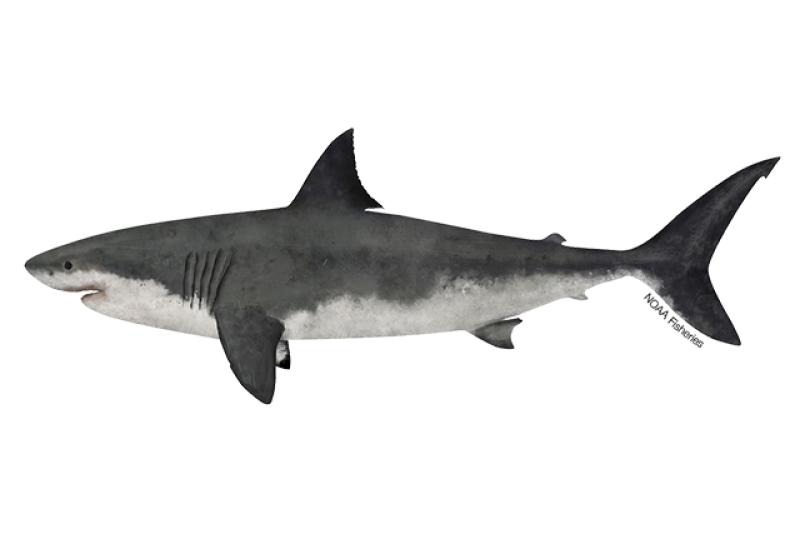Fish & Sharks
Fish are extremely diverse animals living in a variety of habitats ranging from coral reefs and kelp forests to rivers, streams, and the open ocean. Most fish can be categorized into one of two primary groups: bony fish (Osteichthyes) and cartilaginous fish (Chondrichthyes). The skeleton of bony fish is made of bones, while that of cartilaginous fish is made of cartilage. Cartilaginous fish include sharks, skates, and rays.
Most fish under NOAA Fisheries’ jurisdiction are marine fish that spend their entire life in salt water. Others are anadromous—like some species of salmon and sturgeon—which begin their lives in freshwater, migrate to the ocean to grow into adults, and then return to freshwater to spawn.
NOAA Fisheries is responsible for the sustainable management of many species of fish under the Magnuson-Stevens Act that are targeted for human consumption and other uses like fertilizer. Some of these fish include Pacific bluefin tuna, Alaska pollock, and summer flounder. We are also responsible for protecting fish species listed under the Endangered Species Act like Atlantic sturgeon and oceanic whitetip shark.
Species News
 Veteran Colton Long monitors salmon and steelhead habitat in California’s Klamath River basin. Credit: NOAA Fisheries.
Veteran Colton Long monitors salmon and steelhead habitat in California’s Klamath River basin. Credit: NOAA Fisheries.
 U.S.-island fisheries typically consist of small-scale commercial or non-commercial—including subsistence, artisanal, and recreational fisheries. Credit: Adobe Stock
U.S.-island fisheries typically consist of small-scale commercial or non-commercial—including subsistence, artisanal, and recreational fisheries. Credit: Adobe Stock
 Arctic Cod in tank. Credit: NOAA Fisheries.
Arctic Cod in tank. Credit: NOAA Fisheries.
 Removal of Veazie Dam on the Penobscot River in 2013. Credit: Penobscot River Restoration Trust.
Removal of Veazie Dam on the Penobscot River in 2013. Credit: Penobscot River Restoration Trust.
Multimedia
Research
The Role of Small Pelagic Fish in Diverse Ecosystems: Knowledge Gleaned From Food-Web Models
Food-web models represent a synthesis of knowledge of these dependencies and are a platform for…
Presence of Bonefish Leptocephali in Estuarine Habitats on Oʻahu
Along with calm inshore waters, estuarine habitat appears to be a critical element for leptocephali…
Evaluation of the Data Available for Bottomfish Stock Assessments in Guam.
We find only 2 of the 13 Guam BMUS (Lethrinus rubrioperculatus and Pristipomoides auricilla) have…
Saving Pacific Salmon and Steelhead
Our strategy to recover endangered and threatened Pacific salmon and steelhead.
Understanding Fisheries Management in the United States
NOAA Fisheries is responsible for managing marine fisheries within the U.S. exclusive economic zone. Learn more about the sustainable management of our marine fisheries.















